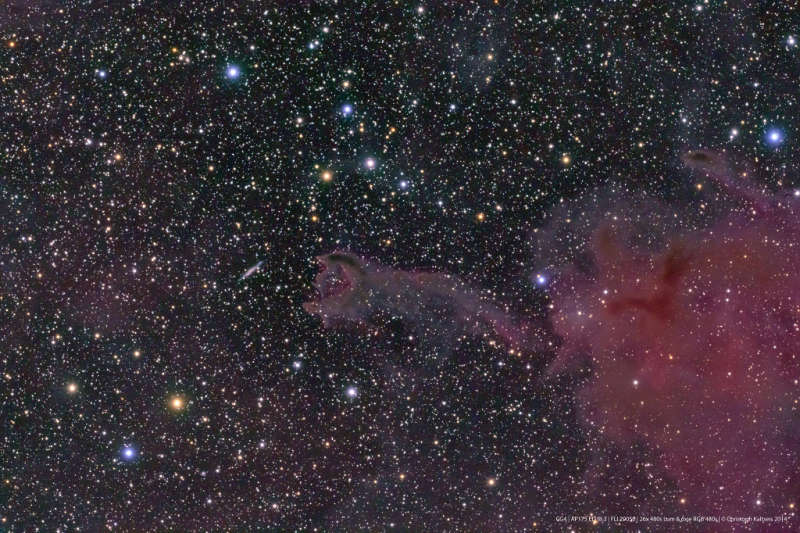Credit & Copyright: CEDIC Team - Processing:
Christoph Kaltseis
Explanation:
The faint and somehow menacing cometary globule CG4
reaches through the center of
this deep southern
skyscape.
About 1,300 light-years from Earth toward the constellation Puppis,
its head is about 1.5 light-years in diameter and its tail about
8 light-years long.
That's far larger than the Solar System's comets that
it seems to resemble.
In fact,
the dusty cloud contains enough material to form several Sun-like
stars and likely has ongoing star formation within.
How its distinctive form came about is still debated, but its
long tail trails away from the
Vela Supernova remnant near the
center of the Gum Nebula, while its head could represent
the rupture of an originally more spherical cloud.
Still, the edge-on spiral galaxy also near picture center is not
actually being
threatened by CG4.
The galaxy lies in the distant background more than 100 million
light-years
away.
1999 2000 2001 2002 2003 2004 2005 2006 2007 2008 2009 2010 2011 2012 2013 2014 2015 2016 2017 2018 2019 2020 2021 2022 2023 2024 2025 |
Январь Февраль Март Апрель Май Июнь Июль Август Сентябрь Октябрь Ноябрь Декабрь |
NASA Web Site Statements, Warnings, and Disclaimers
NASA Official: Jay Norris. Specific rights apply.
A service of: LHEA at NASA / GSFC
& Michigan Tech. U.
|
Публикации с ключевыми словами:
cometary globule - глобулы
Публикации со словами: cometary globule - глобулы | |
См. также:
Все публикации на ту же тему >> | |
